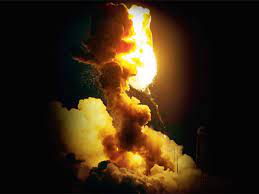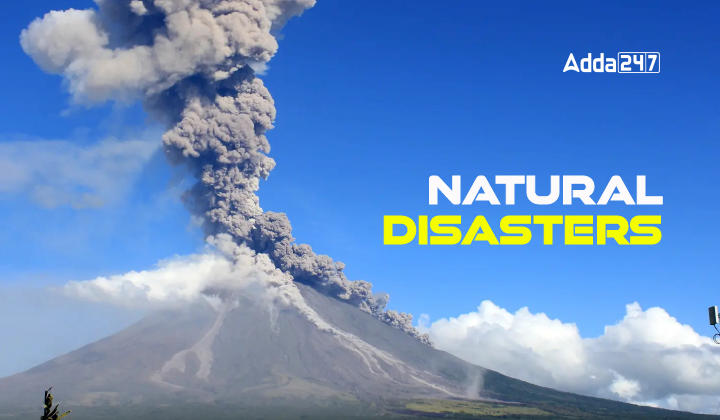Introduction to Natural Disasters: Natural disasters have always been a part of life for people since ancient times. They are events that happen naturally and are out of our control, needing quick action. However, humans have made them happen more often and worse.
They cause harm to the environment, cost a lot of money, and hurt people. It’s hard to tell the difference between natural disasters, things humans make happen, and things we make worse because many things like development and climate change play a role.
Some places are more likely to have natural disasters, like Japan with its earthquakes. Making systems to warn people and plans to manage disasters are really important to make the impact of natural disasters smaller.
What are Natural Disasters?
A natural disaster is a significant event resulting from Earth’s natural processes, characterized by widespread environmental damage and loss of life. Typically, a natural hazard precedes such a disaster. An example is the Gujarat Earthquake of January 26, 2001, which caused extensive devastation. The natural hazard in this case is the presence of active fault lines beneath Gujarat.
However, anthropogenic factors can also influence or exacerbate natural hazards. For instance, deforestation, mining, and agricultural activities can trigger landslides. Natural disasters often result in extensive destruction, as seen in events like wildfires, which not only destroy animal habitats but also cause property damage and loss of life on a large scale.
Types of Natural Disasters
Natural disasters come in many forms. They can be grouped into different categories based on specific criteria:
| Types of Natural Disasters |
| Geological Disasters |
Hydrological Disasters |
Meteorological Disasters |
Space Disasters |
Other Types of Disasters |
| Avalanche
Landslides
Earthquakes
Sinkholes
Volcanic Eruption |
Flood
Tsunami
Limnic Eruption |
Cyclonic Storm
Blizzard
Cold waves
Heat waves
Drought
Hailstorms
Tornadoes |
Impact Events
Solar Flares
Gamma-Ray Bursts |
Forest fires |
Geological Disasters
Geological disasters, also known as geohazards, are natural events caused by Earth’s geological processes that have the potential to cause significant damage to the environment, infrastructure, and human lives. These disasters result from the dynamic interactions within the Earth’s lithosphere, hydrosphere, atmosphere, and biosphere. They can occur suddenly and unpredictably, posing immense challenges for preparedness and mitigation efforts. Here are some of the most common geological disasters:
- Earthquakes: Earthquakes are caused by the sudden release of energy along faults in the Earth’s crust. They can result in ground shaking, surface rupture, landslides, tsunamis, and liquefaction. Earthquakes can cause widespread destruction of buildings, roads, bridges, and other infrastructure, leading to loss of life and economic disruption.
- Volcanic Eruptions: Volcanic eruptions occur when magma rises to the Earth’s surface, leading to the release of gases, ash, lava, and volcanic rocks. Eruptions can cause pyroclastic flows, lahars (volcanic mudflows), ashfall, and volcanic gases that pose risks to human health, agriculture, and the environment. They can also trigger secondary hazards such as landslides and tsunamis.
- Landslides and Rockfalls: Landslides and rockfalls occur when masses of rock, soil, or debris move down slopes under the force of gravity. They can be triggered by heavy rainfall, earthquakes, volcanic activity, or human activities such as deforestation and construction. Landslides and rockfalls can damage infrastructure, block roads and rivers, and bury communities, resulting in loss of life and property damage.
- Sinkholes: Sinkholes are depressions or cavities that form in the ground when underlying rock, soil, or sediment collapses. They can be triggered by natural processes such as erosion, groundwater fluctuations, or dissolution of soluble rocks like limestone. Sinkholes can swallow buildings, roads, and vehicles without warning, posing risks to human safety and infrastructure.
Hydrological Disasters
Hydrological disasters, also referred to as hydrological hazards, are natural events related to water that have the potential to cause significant harm to human societies, infrastructure, and the environment. These disasters arise from the complex interactions between water and Earth’s geological and atmospheric systems. Hydrological disasters encompass a range of events, each with its causes, impacts, and mitigation strategies. Here are some of the most common hydrological disasters:
- Flood: A flood happens when a lot of water overflows from rivers or lakes and covers nearby land. Sometimes, people building dams can make floods happen more often and become worse. Also, when there’s unexpected heavy rain or when we don’t take care of places that catch water, floods can occur. The Brahmaputra River floods every year, making life hard for the people living nearby. In cities like Mumbai and Chennai, floods have become more common because there aren’t enough ways to drain the water away from where people live.
- Tsunami: A tsunami occurs when something big, like an earthquake or a landslide underwater, suddenly moves a lot of water in the ocean or a big lake. This movement creates huge waves that can last for a long time. Tsunamis mainly hit coastal areas, wiping out buildings and causing a lot of people to lose their lives. The 2004 Indian Ocean tsunami was one of the deadliest tsunamis ever, causing the deaths of more than 200,000 people.
Meteorological Disasters
Meteorological disasters often stem from severe weather conditions like heavy rain, snow, or drought. They disrupt the normal patterns in the Earth’s atmosphere and weather systems. These kinds of disasters can be very harmful to the environment and can cause a lot of damage to life and property. Some examples of meteorological disasters include hurricanes, hailstorms, and tornadoes.

Space Disasters
Space disasters are things like solar flares, big impacts from objects hitting Earth, and sudden bursts of air in the sky. In the long history of Earth, big impacts have even wiped out many living things. One big event called the KT extinction, about 65 million years ago, likely wiped out dinosaurs, leaving only birds. Solar flares happen when the sun lets out a lot of energy suddenly. They don’t directly hurt life, but they can mess up electrical stuff and cause problems. Gamma-ray bursts are super big explosions seen in faraway places. Scientists think one of these bursts, long ago, might have caused a big extinction event too. If it happened again today, it could be really bad for life on Earth.

Examples of Natural Disasters
Most of the natural disasters we mentioned have happened before. Now, let’s discuss some of the most famous ones:






 TSPSC Group 1 Question Paper 2024, Downl...
TSPSC Group 1 Question Paper 2024, Downl...
 TSPSC Group 1 Answer key 2024 Out, Downl...
TSPSC Group 1 Answer key 2024 Out, Downl...
 UPSC Prelims 2024 Question Paper, Downlo...
UPSC Prelims 2024 Question Paper, Downlo...




